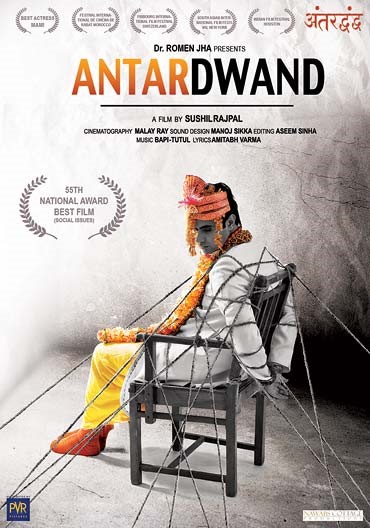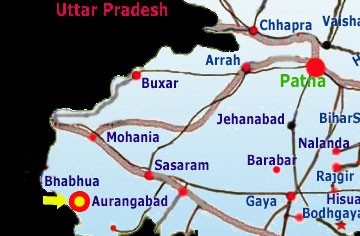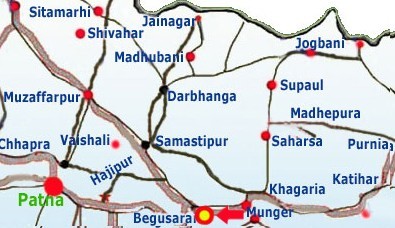Maner Sharif (Patna, Maner):
It is a large village of historical antiquities, situated in the extreme north west of Danapur Sub-division, about 32 kms west of Patna on Patna-Arrah Highway. In the early ages Maner was a centre of learning and it is said that grammarian Panini, and also Bararuchi, lived and studied here. Maner contains two well-known Mohammedan tombs, that of Shah Daulat or Makhdum Daulat, known as Chhoti Dargah, and the other that of Sheikh Yahia Maneri or Makhdum Yahia, called the Bari Dargah. Makhdum Daulat died at Maner in 1608, and Ibrahim Khan, Governor of Bihar and one of the saint’s disciples completed the erection of his mausoleum in 1616. The building is exceptionally fine one, with walls containing carvings of great delicacy and high finish. A great dome crowns it, and the ceiling is covered with carved inscriptions from the Quran. Every detail of it is characteristic of the architecture of Jehangir’s region, and it is by far the finest monument of the Mughals in Eastern India. Inside the compound there is a mosque also built by Ibrahim Khan in 1619, whiles a fine gateway bearing an older inscription corresponding to 1603-01, and affords access to the north. The tomb of Yahia Maneri lies in a mosque walls and ghats, and pillared porticos jutting out into it, which is connected with the old bed of the River Sone by a tunnel 400-ft long.
Khankah Mujibia (Phulwari Sharif, Patna):
Nearly 7 kms from Patna Railway Station, Phulwari Sharif is an important Islamic pilgrimage. It has been always a favorite abode of Sufi saints in various times. Hazrat Pir Muzibullah Quadri was one of those in the 18th Century. The Khankah Muzibia, founded by him at Phulwari Sharif is called the Bari Khankah. An old Madarsa here has been the most important centre for teaching of Islamic philosophy since its establishment.
Sacred hairs of the beard of Paigamber Hazrat Muhammad Saheb are preserved here in Banri Khankah that attracts throngs of his followers and a big mela is held every year.
There is also an archeologically important and worth seeing ancient Sangi Masjid (mosque) built of red stones at Phulwari Sharif. It was built by the Mughal Emperor Humayun.
Khankah Emadia (Mangal Talab, Patna City, Patna):
One of the off-springs in the family of prominent Sufi Saint Hazrat Pir Muzibullah Quadri had founded another Khankah during 19th century near a tank called Mangal Talab that is situated in the Patna City Chowk area. It is called Khankah Emadia that houses a Madarsa. An Urs is held here annually when throngs of devotees assemble and pay their respect to their beloved Sufi Saint.
Dargah Sharif, Mithan Ghat (Patna City, Patna):
A beautiful double storied mosque was built by Mughal Prince Azim on the banks of Ganges at Mittan Ghat, Patna City area that was previously called Azimabad during the reign of Mughal Emperor Aurangzeb. This mosque was built for Mulla Mittan who was teacher of the Prince. It was the place from where the great Sufi Saint Hazrat Makhdum Munnem used to preach his disciples during the 18th Century. The ancient mosque still exists and is popularly known as Dargah Sharif. Every year, after 5 days of “the Eid festival, an annual Urs Chiraga is held here when devotees assemble at this Dargah Sharif in great numbers.
Hajipur Karbala (Vaishali):
It was constructed 175 years ago by Shah Alam. It attracts a large crowd of Muslims throughout the years.
Hasanpura (Siwan):
The village is situated about 21 kms South of Siwan on the bank of Dhanai river. According to tradition, Makhdum Saiyed Hasan Chisti, a saint who came from Arabia to India and settled here, founded this village. He also founded a Khankah (religious institution) here. The village contains remains of a large mosque and tomb of the Saint, which is visited by both Hindus and Muslims. The grave is a large open court to the west of the village. In front of it is a basalt image of Vishnu but it has been ruthlessly treated. It is regarded as an inauspicious fiend who has turned into stone by the holy Makdum and must not be raised or placed erect. It contains no inscription but its style shows it to belong to about the seventh century A.D.
Bibi Kamaal Sahiba (Kako, Jehanabad):
The village is the headquarters of the block of the same name and is situated on the Jehanabad-Bihar Sharif road, about 10 kms East of Jehanabad railway tation. According to a local legend, Ram Chandra’s stepmother, Rani Kaikeyi of Ayodhya lived here for sometime and the village took its name after her. The village took its name after her. The village has also a tomb of Hazrat Bibi Kamaal Sahiba, a great Muslim lady saint. It is said that this lady was the aunt of Hazrat Makhdum Saheb of Bihar Sharif and possessed divine powers.
Bari Dargah (Bihar Sharif, Nalanda):
This is headquarters of Nalanda district that lays 30 kms South of Bakhtiarpur on NH-31. This is also a railhead on the Bakhtiarpur Rajgir branch line of the Eastern Indian Railway. This town is known as Bihar Sharif, owing to its many Muslim tombs that still retain traces of its former importance as a Muslim pilgrimage. There is a hill called Pir Pahari, about 1 m to the northwest of the town. At its summit is the dargah or mausoleum of the Saint Mallik Ibrahim Bayu, round which are tem smaller tombs. It is a brick structure surmounted by a dome and bears inscriptions showing that the saint died in 1353. Another great dargah is that of Mokhdum Shah Sharif ud-din, also called Makhdum-ul-Mulk, died here in 1379; the inscription over the entrance shows that his tomb was built in 1569. This tomb, which stands on the south bank of the river, is held in great veneration by the local Mohammedans, who assemble here on the 5th day of Sawan to celebrate the anniversary of his death. The Chhoti Dargah is the shrine of Badruddin Badr-I-Alam, famous saint who died here in 1440.
Chhoti Dargah (Bihar Sharif, Nalanda):
Dargah of Makhdum Hazrat Sultan Ahmed Charampose, Bihar Sharif (Nalanda). The biggest and the oldest building of Mohalla-Amber in the Bihar Sharif Town (Nalanda), is Tomb of Hazarat Makhdum Sultan Saiyad Shah Ahmed Charampose Teg Barhana Rohmatulla Alaib. He was born in the year 1236 and passed away in 1335 (according to Islamic calendar 657-776 Hizri). He is ranked to a very high order among other Sufi saints and Auliahs. Thousands and thousand of people participate in the ‘Urs’ celebrated here in memory of the Saint every year.



